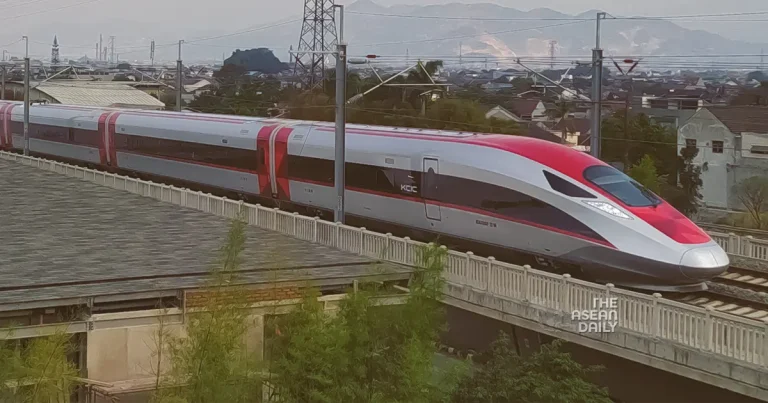31-7-2024 (JAKARTA) In a significant leap forward for Indonesia’s transportation sector, local train drivers have successfully operated the Whoosh high-speed train at its maximum speed of 350 kilometres per hour. This achievement marks a crucial step in the country’s journey towards independent management of advanced railway technology.
Eva Chairunisa, Corporate Secretary General Manager of PT Kereta Cepat Indonesia China (KCIC), announced this milestone on Tuesday, emphasising its importance for the nation’s railway industry. “This moment exemplifies significant progress in developing Indonesian human resources within the railway sector,” Chairunisa stated, highlighting the effective knowledge transfer from Chinese experts to local personnel.
The Whoosh project, a collaborative effort between Indonesia and China, has been steadily progressing, with Indonesian drivers moving from observational roles to hands-on operation of the high-speed train under controlled, passenger-free conditions. This transition underscores the project’s commitment to fostering local expertise and reducing reliance on foreign operators.
KCIC has reaffirmed its dedication to enhancing training programmes and knowledge transfer initiatives. The ultimate goal is to enable Indonesian workers to independently manage all aspects of high-speed train operations and maintenance. To facilitate this process, translators have been providing support during training sessions, ensuring that local drivers fully comprehend the guidance offered by their more experienced counterparts.
The training programme has shown promising results, with 39 out of 72 Indonesian machinists advancing to the second stage of their training. This phase involves hands-on experience, including operating the Whoosh during shunting at the Tegalluar Depot and certifying trains for the inaugural journey from Halim to Tegalluar.
The scope of the knowledge transfer extends beyond just train drivers. Chairunisa revealed that 600 local employees are currently involved in various aspects of the project, including facility and infrastructure maintenance and train operations. This comprehensive approach aims to create a robust, locally-sourced workforce capable of managing the entire high-speed rail system.
The Whoosh project represents a significant technological leap for Indonesia’s transportation infrastructure. As the first of its kind in Southeast Asia, the high-speed rail line is expected to dramatically reduce travel times between Jakarta and Bandung, potentially transforming economic and social dynamics in the region.
However, the project has not been without its challenges. Critics have raised concerns about the cost and environmental impact of the rail line. Nevertheless, proponents argue that the long-term benefits, including reduced road congestion and improved connectivity, outweigh these concerns.




